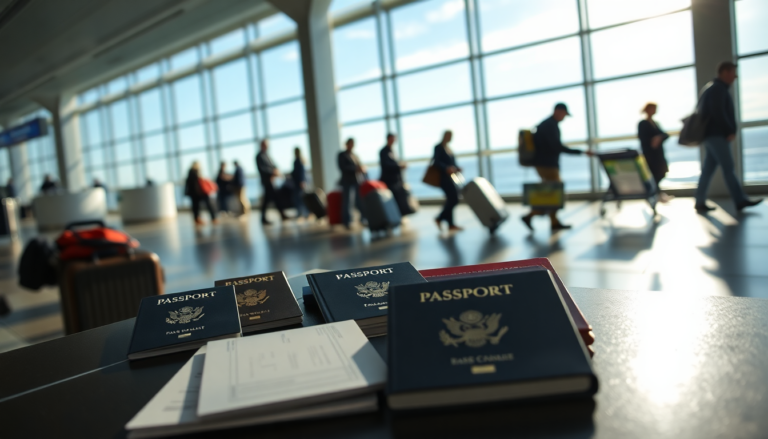Argomenti trattati
As you gear up for your exciting journey to Canada, have you considered how crucial proper identification is? A valid passport isn’t just your ticket across borders; it’s your assurance of identity and rights as a citizen or resident. In a world rich with new experiences and flavors, understanding the ins and outs of identification for you and your family can truly make a difference.
What You Need to Know About Canadian Entry Rights
For Canadian citizens, permanent residents, and Indigenous Peoples, entering Canada is more than just a privilege—it’s a right. Each group shares this fundamental freedom, but they also have unique documentation requirements. A Canadian passport is your golden key, universally recognized and essential for international travel, serving as both identification and a promise of safe return to your homeland. Isn’t it comforting to know you have that assurance?
If you’re a permanent resident and part of programs like NEXUS or FAST, remember to carry both your passport and proof of your residency status. These documents are vital, especially when you approach border checkpoints, where officials may ask to verify your identity and residency. For Indigenous Peoples registered under the Indian Act, the process is straightforward yet steeped in history; the Secure Certificate of Indian Status acts as a passport of sorts, affirming their inherent rights to cross the border. Isn’t it fascinating how identity can intertwine with culture and history?
Getting Technical About Travel Documentation
When it comes to international travel, knowing what documents you need is essential. The Canadian Border Services Agency (CBSA) strongly recommends that all travelers, regardless of age, carry a valid passport. While other identification forms like driver’s licenses or birth certificates can complement your entry, nothing beats the reliability of a passport. If your proof of citizenship doesn’t include a photo, be prepared to present additional identification, such as a government-issued photo ID.
For our friends who are U.S. permanent residents, it’s important to carry dual documentation when flying into Canada. This means you’ll need both proof of citizenship and a valid U.S. permanent resident card. If you’re crossing by land or water, showing your resident card is usually enough. Simple, right?
As we explore the intricate landscape of travel requirements, let’s not forget the unique situations facing Indigenous Peoples from both Canada and the U.S. Temporary border mobility measures can create special opportunities for families divided by borders, allowing them to reunite under specific conditions. It truly highlights the importance of being informed and prepared, doesn’t it?
The Importance of Preparation and Authenticity
Before you set off on your adventure, take the time to familiarize yourself with the entry requirements based on your nationality and residency status. Besides your passport, some travelers may also need to secure a visa or an Electronic Travel Authorization (eTA) to enter Canada. Applying for an eTA is a breeze and typically results in quick approval, though some applications might require a bit more time. It’s always wise to apply well in advance of your travel date. Why leave anything to chance?
As you prepare your documents, be cautious about where you apply for your eTA. Many unofficial services can mislead travelers. Always rely on government resources to obtain essential travel authorizations. It’s better to be safe than sorry!
Travelers arriving from St. Pierre and Miquelon as French citizens have a unique exemption from presenting a passport, as long as they can verify their identity with a national identification card. However, always check with your airline for any specific travel document requirements, as these can differ from what border services might stipulate.
If you’re traveling with minors, don’t forget to secure the necessary consent letters from custodial parents or guardians. These documents should be notarized to ensure their legitimacy, helping to avoid delays during border checks. After all, the last thing you want is to be held up at the border.
Ultimately, every travel experience is a beautiful blend of preparation, culture, and adventure. Armed with the right identification and knowledge, you can fully immerse yourself in the rich tapestry of experiences that await you in Canada. So, what are you waiting for? Your adventure is just a passport away!

